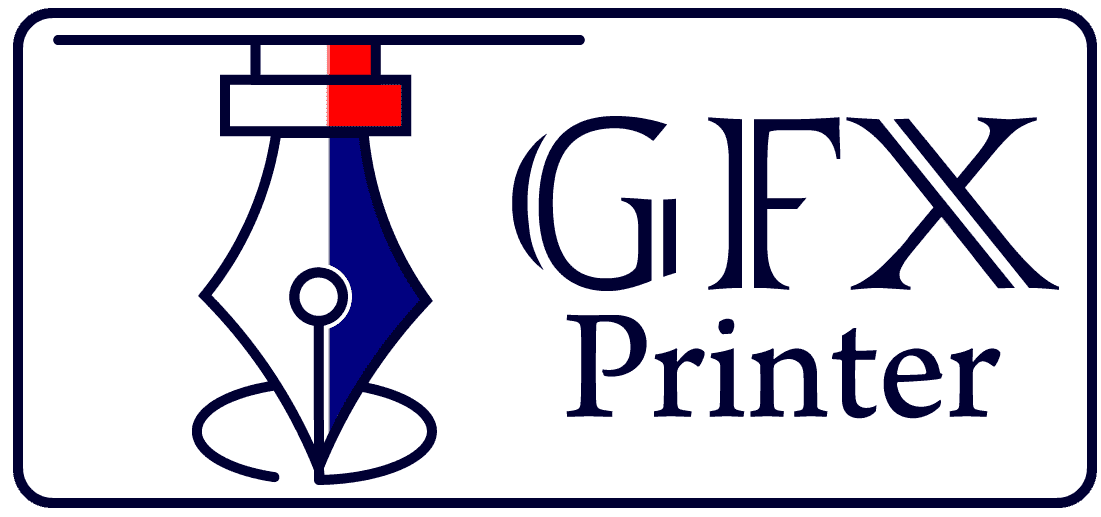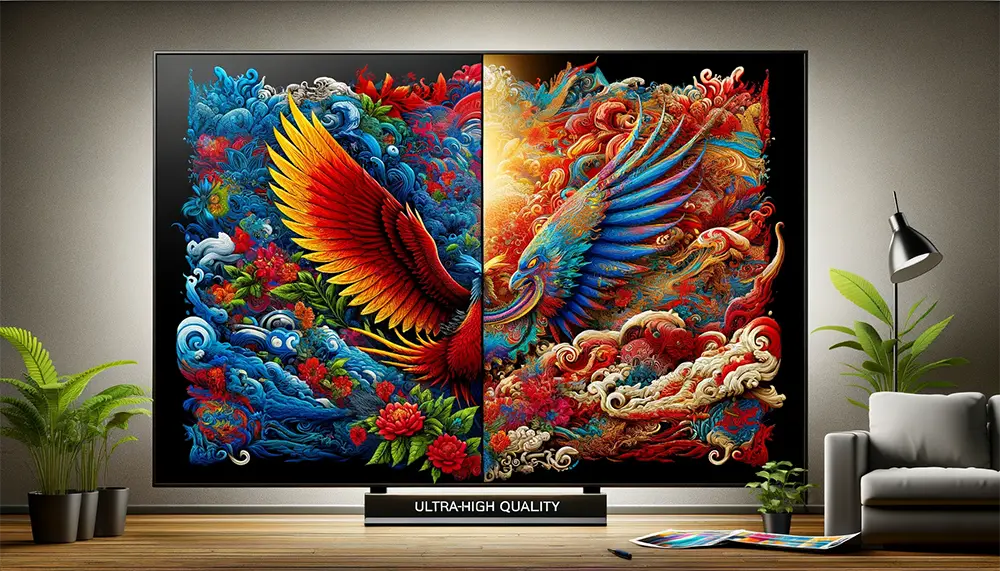Introduction: The Evolution of Printing in Dubai’s Dynamic Market
In the bustling heart of Dubai, UAE, the printing industry has seen a remarkable evolution, and GFX Printer stands as a testament to this growth. Specializing in custom printing solutions, GFX Printer has mastered both screen and digital printing techniques. This article delves into the intricate world of Screen Printing vs. Digital Printing, offering a comprehensive guide for those navigating the vibrant landscape of custom printing in Dubai.
I. The Art of Screen Printing
Screen printing, a time-honored technique, has carved its niche in the printing world with its unique qualities.
1.1 The Process Behind Screen Printing
Here, we unravel the traditional process of screen printing, emphasizing its reliance on manual craftsmanship and precision. This section explores how screens are used to transfer designs onto various materials, making it a popular choice for bulk orders. The process begins with creating a stencil (screen), and then ink is pushed through this screen onto the printing surface. Each color requires a separate screen, making the process intricate but rewarding.
1.2 Advantages: Why Screen Printing Stands Out
Screen printing is not just a process; it’s an art form that offers unmatched vibrancy and durability. This section discusses how its ability to produce bright, long-lasting colors makes it ideal for certain types of projects, particularly those requiring a high volume of prints. The technique’s proficiency in handling large orders and its compatibility with a wide range of materials, from fabric to metal, are highlighted. The tactile texture produced in screen printing also adds a unique dimension to the prints, which digital printing cannot replicate.
1.3 Limitations: The Other Side of the Screen
Every technique has its drawbacks. In this part, we explore the limitations of screen printing, such as its relatively higher setup costs and longer production time, which might not be suitable for all project types. Additionally, the complexity of color mixing and the difficulty in achieving exact color matches in repeat orders are discussed. The environmental impact of screen printing, considering the use of inks and chemicals, is also addressed, emphasizing the importance of responsible practices in the industry.
II. Digital Printing: The Modern Touch
Digital printing, a more recent innovation, has revolutionized the printing industry with its versatility and efficiency.
2.1 Digital Printing Demystified
This section breaks down the digital printing process, highlighting its key feature – the direct application of ink onto the material, eliminating the need for screens. The digital printing process involves using advanced inkjet or laser printers that deposit pigment or toner directly onto a wide range of materials. We’ll delve into how this method offers more flexibility in design and color choices, capable of reproducing high-resolution images with precision.

Infographic showcasing the digital printing process, emphasizing the direct ink application onto materials
2.2 Benefits: The Digital Edge
Digital printing shines in its ability to handle intricate designs and small to medium-scale orders with ease. Here, we’ll discuss the advantages such as quick turnaround times and lower setup costs for smaller orders. The ability to print on-demand and customize each print without the need for extensive setup is a game-changer for businesses requiring flexibility. This section will also highlight the precision and consistency digital printing offers, making it ideal for detailed graphic work.
2.3 Constraints of Digital Printing
Despite its advantages, digital printing has limitations, particularly in terms of durability and cost-effectiveness for large-scale orders. This section will provide an honest look at where digital printing may not be the best fit. Challenges such as the higher cost per unit for large orders and the limitations in material compatibility compared to screen printing will be discussed. The environmental aspects of digital printing, including the use of inks and energy consumption, will also be examined.

Infographic detailing the limitations of digital printing, focusing on cost and material constraints
III. Comparative Analysis: Screen vs. Digital
In this section, we dive deeper into a side-by-side comparison of screen and digital printing across various parameters.
3.1 Quality and Color Fidelity
Quality and color representation are crucial in printing. This part compares how each method handles color accuracy and overall print quality. Screen printing is renowned for its vibrant, saturated colors, especially on darker materials. It’s ideal for designs that require a high level of vibrancy and have fewer colors. Digital printing, on the other hand, excels in reproducing detailed images with a wide color palette, making it suitable for intricate designs and photographs.

Comparative image showcasing the vibrancy of screen printing and the detailed color accuracy of digital printing
3.2 Cost Comparison: Evaluating Expenses
Here, we analyze the cost implications of both methods. While screen printing might be more cost-effective for larger orders, digital printing could be the go-to for smaller, more detailed projects. The setup cost for screen printing can be high, making it less economical for small runs. Digital printing, with minimal setup, offers cost efficiency for short runs but may become expensive for bulk orders due to the higher cost per unit.
3.3 Durability and Sustainability
We assess the longevity and environmental impact of products from both printing methods. Screen printing often uses plastisol inks which can be less eco-friendly but offers a high degree of durability. Digital printing, while offering faster turnaround and less waste in terms of material, often involves inks that are not as long-lasting but can be more eco-friendly. This evaluation helps in understanding which method aligns better with sustainability goals.

Comparative chart focusing on the durability and eco-friendliness of screen and digital printing methods
IV. Real-World Applications: Case Studies
This section brings theory into practice with real-world examples from GFX Printer’s portfolio.
4.1 Triumphs in Screen Printing
Highlighting successful projects where screen printing was the chosen method, this part showcases its effectiveness in certain scenarios. We delve into diverse projects like custom T-shirts for events, vibrant posters for advertising campaigns, and unique merchandise for corporate branding. Each case study will highlight the specific reasons for choosing screen printing, such as the need for rich, vibrant colors and durability in products like T-shirts and banners.

Collection of various successful screen printing projects by GFX Printer, displaying vibrant colors and diverse applications
4.2 Digital Printing Successes
Conversely, we’ll present instances where digital printing was the ideal choice, demonstrating its strengths in different contexts. Case studies might include detailed marketing brochures, personalized small-batch promotional items, and high-quality photographic prints. These examples will emphasize the precision, versatility, and quick turnaround times that digital printing offers, particularly for projects requiring intricate details and a variety of colors.

Showcase of various successful digital printing projects, highlighting the detail and color variety achievable with digital printing
V. Making the Right Choice for Your Project
Choosing the right printing method can be daunting. This section aims to simplify that decision-making process.
5.1 Key Considerations in Selecting a Printing Method
We discuss various factors like order size, complexity of design, and urgency, guiding readers to make an informed choice. Key points include:
- Order Size: Large orders might benefit from screen printing due to cost-effectiveness, while smaller orders might find digital printing more suitable.
- Design Complexity: For intricate, multi-colored designs, digital printing offers greater flexibility. Screen printing is ideal for simpler designs with fewer colors.
- Material Type: Certain materials are more suited for screen printing, while others work better with digital techniques.
- Turnaround Time: Digital printing often has a quicker turnaround time, important for urgent projects.
- Budget Constraints: Understanding the cost implications of each method is crucial in decision-making.

Informative infographic outlining key factors to consider when selecting between screen and digital printing methods
5.2 Expert Insights from GFX Printer
Leveraging the expertise of GFX Printer, this part offers professional advice on choosing between screen and digital printing based on specific project needs. Insights provided by experienced professionals at GFX Printer will include tips on evaluating a project’s requirements and how to best match those needs with the appropriate printing method.

Image of a GFX Printer expert with key insights and tips on selecting the best printing method for different projects
Final Thoughts: Embracing the Future of Printing
To conclude, we’ll summarize the key takeaways from the article, emphasizing the importance of selecting the right printing method for custom projects. The conclusion will inspire readers to embrace the evolving world of printing and seek expert guidance from GFX Printer for their unique needs in Dubai, UAE.

Conceptual image depicting the evolution and future of printing technology, symbolizing the blend of tradition and innovation in the industry
Frequently Asked Questions
- What are the main differences between screen printing and digital printing?
- Screen printing involves pushing ink through a stenciled mesh screen to create a printed design. It’s ideal for vibrant, high-volume orders. Digital printing, on the other hand, involves printing digital images directly onto the material. It’s best for detailed, lower volume orders.
- Is digital printing more expensive than screen printing?
- Digital printing can be more cost-effective for small-scale orders due to lower setup costs, whereas screen printing generally becomes more economical with larger quantities due to its higher initial setup cost.
- Which printing method offers better color accuracy?
- Digital printing typically provides better color accuracy and is ideal for designs that require detailed color matching. Screen printing is better for bolder, solid colors.
- Can screen printing and digital printing be used on the same types of materials?
- Both methods can be used on a variety of materials, but there are certain limitations. Screen printing works well on a broader range of materials including textiles, metals, and plastics, whereas digital printing is generally better suited for paper and light fabrics.
- How does the durability of screen printing compare to digital printing?
- Screen printing generally offers greater durability, especially on clothing and outdoor items. Digital prints may fade quicker over time, particularly if exposed to the elements.
- Which printing method is more environmentally friendly?
- Digital printing is often considered more eco-friendly due to its less wasteful process and the use of water-based inks. Screen printing can involve more chemicals and solvents, depending on the ink used.








